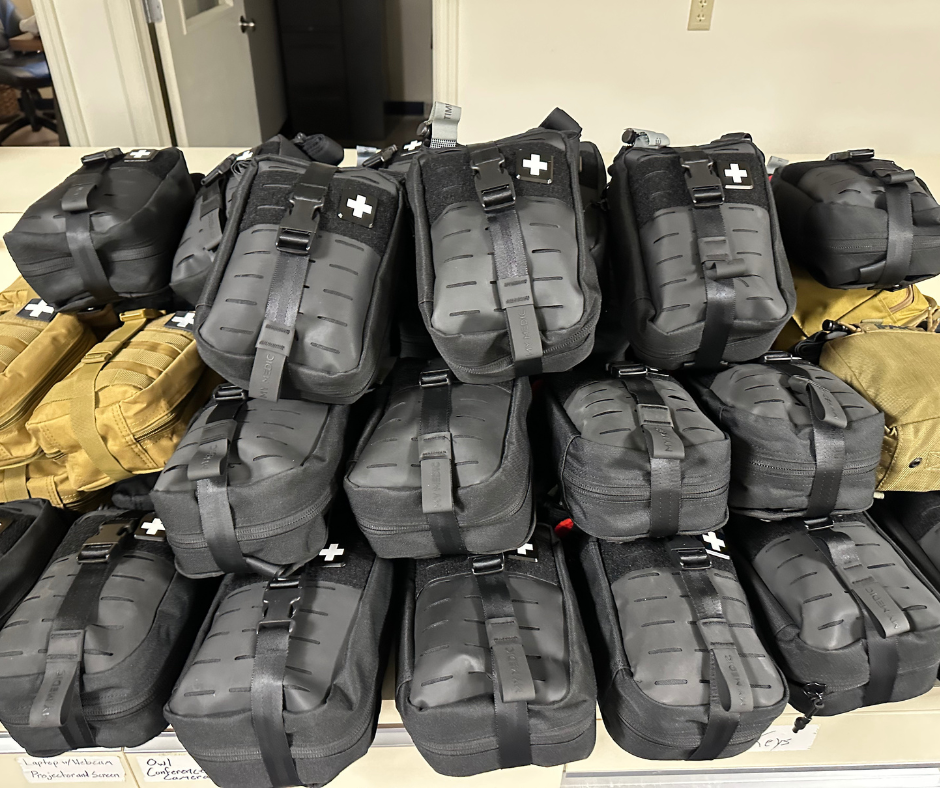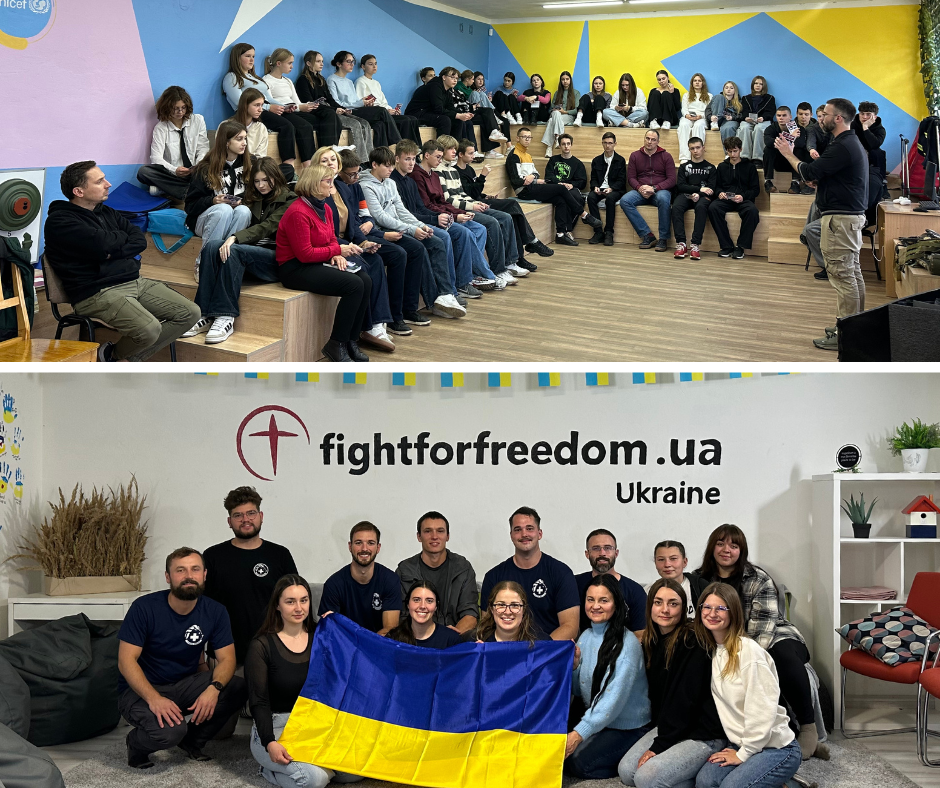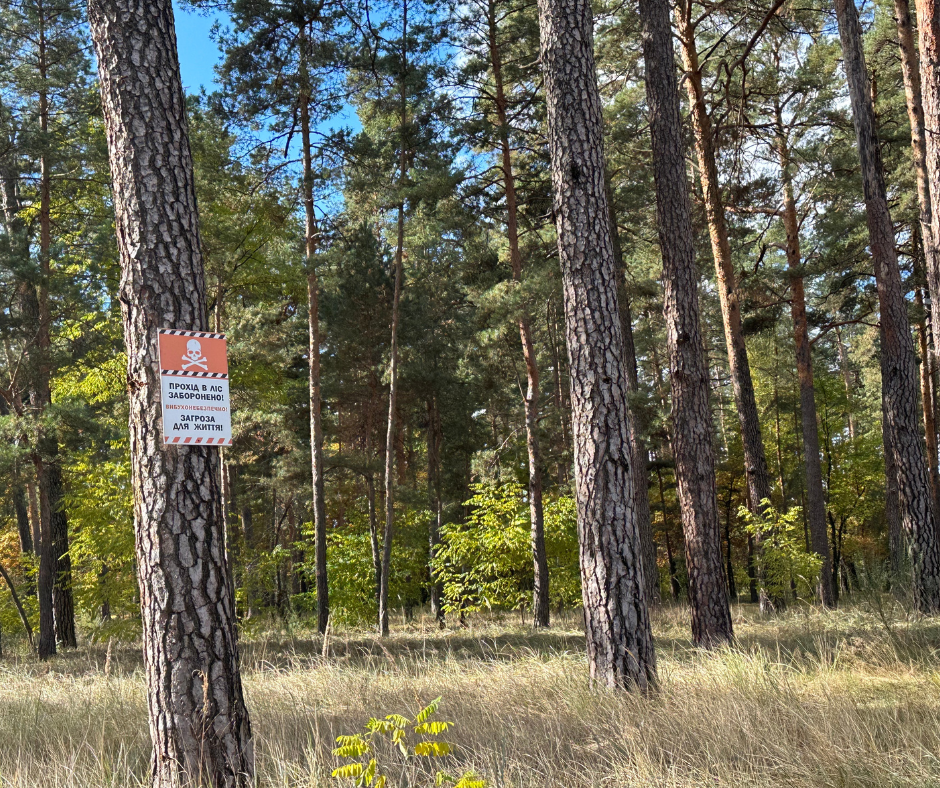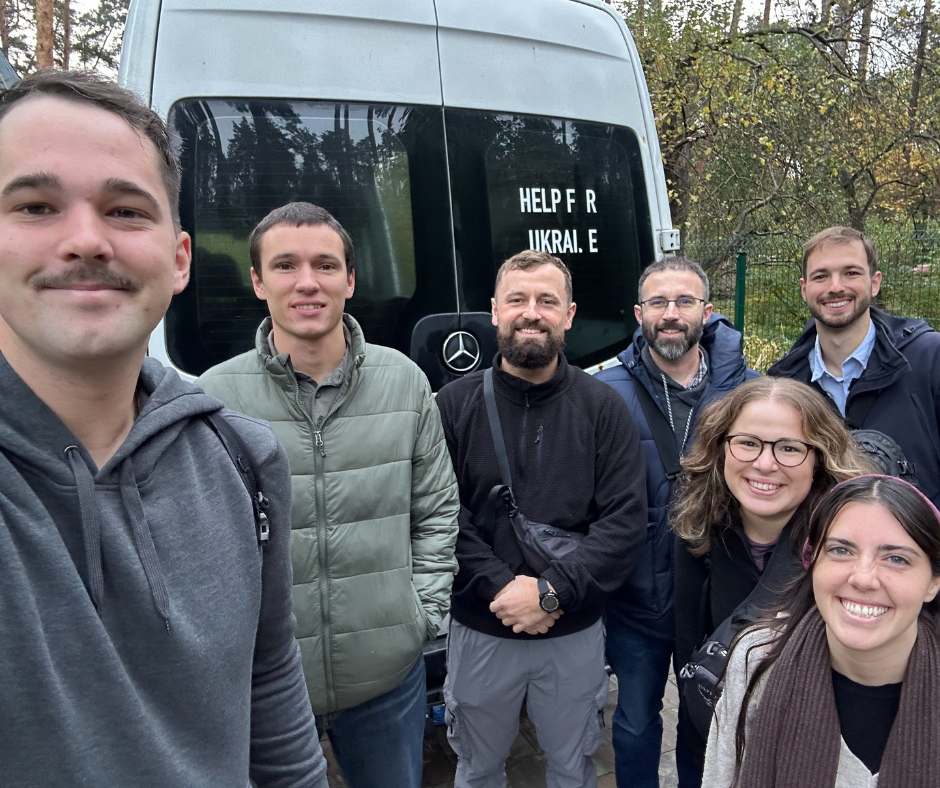Stepping off the train into Kyiv at night, the first thing I noticed was how ordinary life tries to keep moving even while the air itself feels uncertain to me. People mill around looking for their train. Taxis wait expectantly for a passenger to come along, and so on, just like any other major city. Except it wasn’t. Even here in the capital, drones or missiles could pummel the city at any moment.
Kristi, a Chazak Medical Attaché, and I (serving as Photographer Attaché and Team Chaplain) traveled to Ukraine around a week after the rest of the team. The other five deployed in Project Nightingale had already been working in a front-line city, and already had some harrowing experiences to tell us about, including FPV sightings and close calls with artillery strikes. But they made it back to the capital safely, and we spent some time debriefing their time on the front-line, and our travels. They had been able to already train 168 people in life-saving skills!
Later that night, a few of us sat outside, listening for drones and praying, and the resounding anti-aircraft guns that shattered the night sky. Five civilians were killed that night in Ukraine, and thirty-seven were injured. That was my welcome to Ukraine.
Our mission in Ukraine was ambitious. We were there to focus on training civilians, volunteers, and students in Stop the Bleed and tactical first aid. These are people who have lived with the realities of war for nearly four years now. They understand why it matters to know how to save a life. Initially, our hope was that we’d be able to train around 100 people in life-saving skills. The impact of this would be remarkable.
The next day, our team split up early in the morning. My team went to Kharkiv, a city less than 20 miles from the border to Russia. As we convoyed toward the city, I saw burned cars, destroyed buildings, and a heavy military presence. On arrival, we met up at Fight For Freedom Ukraine’s base. This organization does humanitarian aid and care programs for elderly, orphans, and widows across Ukraine. First thing, we unloaded their box truck filled with humanitarian aid. Then, I had the opportunity to ride with them to deliver school supplies to a ministry for preschoolers.
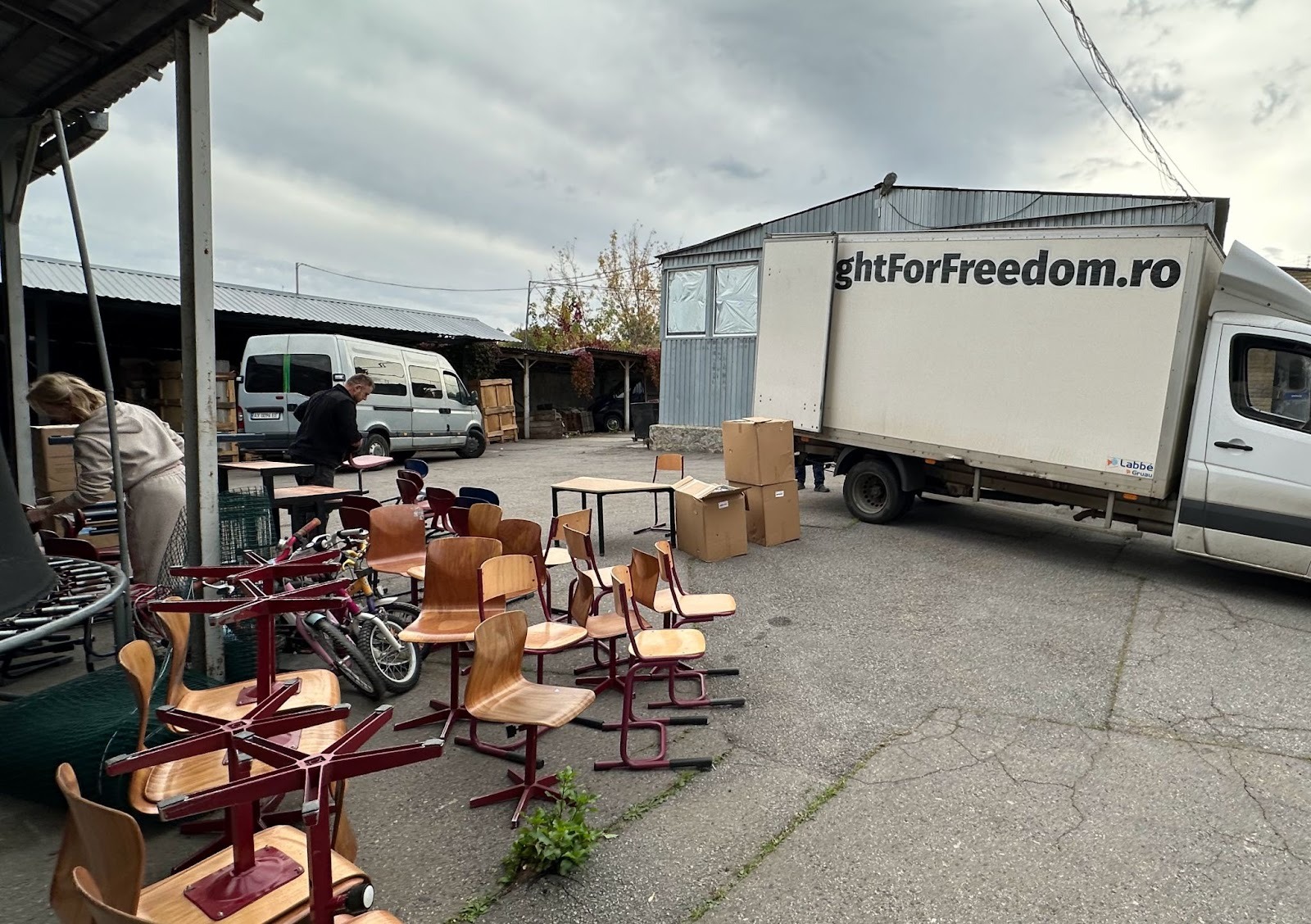
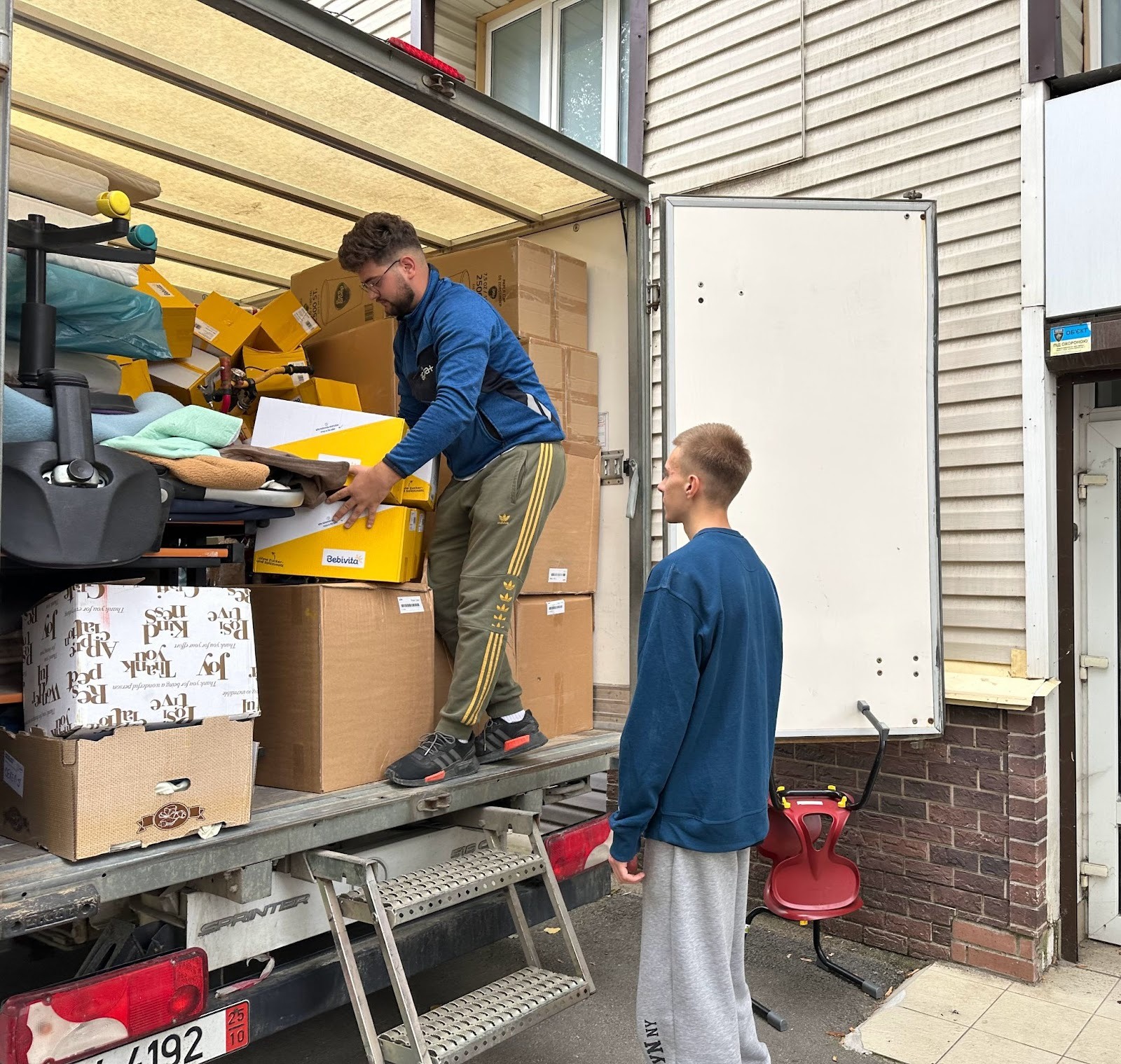
After delivering the supplies, the director of the preschool invited us in for tea and cookies. We learned about their mission, and how God answered so many prayers for them to be able to run this kindergarten in the face of many obstacles. As we left, I heard the voices of the children singing in the room beside us. While I didn’t understand the words, I knew they were praising God, even as my phone was buzzing with air raid alerts.
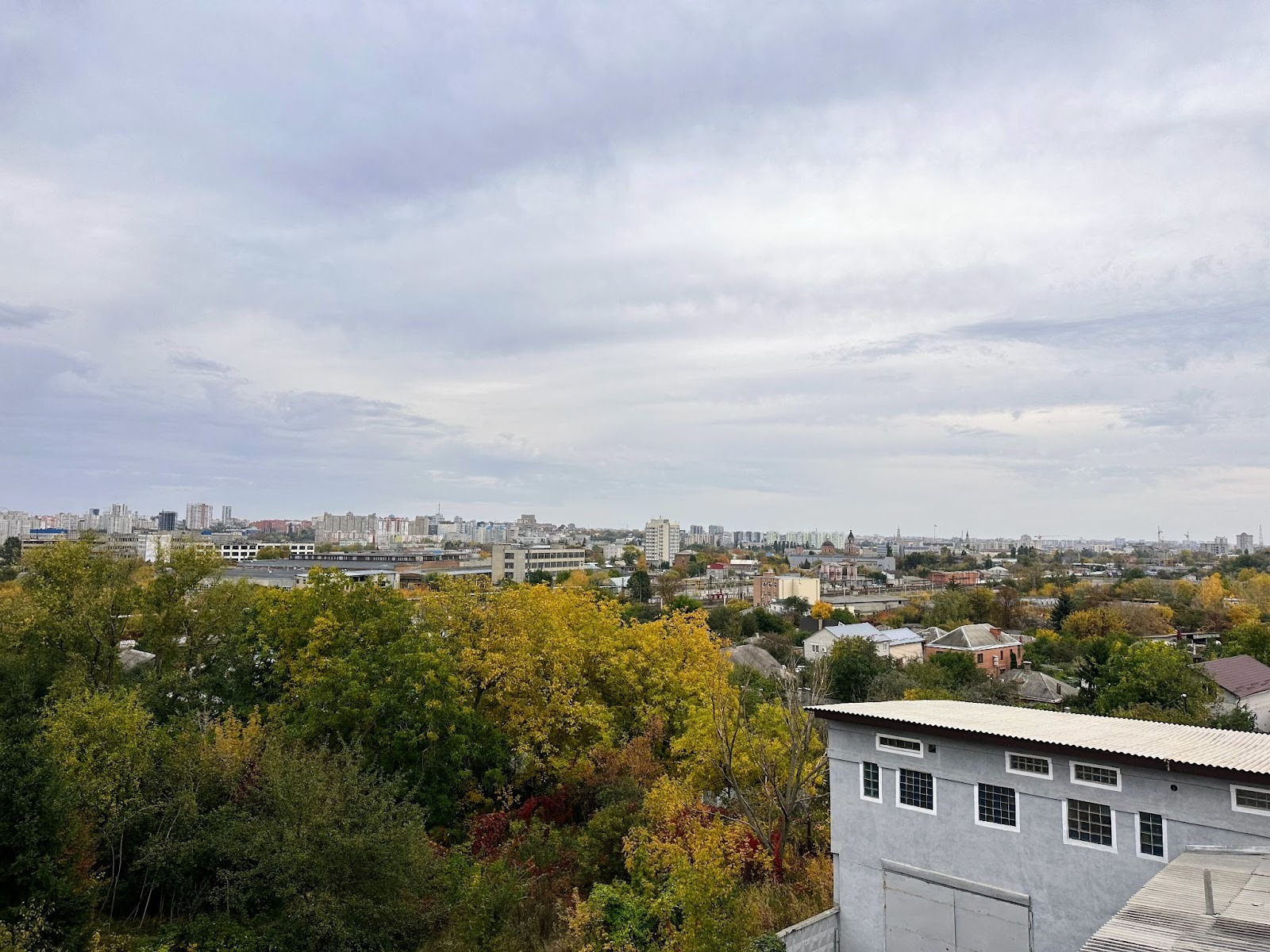
We spent a couple of days there, teaching several classes on Tactical First Aid. We were able to train 45 people in life-saving skills. Every student received a gift of first aid supplies. In the evenings we enjoyed good fellowship and connecting with Fight For Freedom Ukraine’s volunteers. We spent time talking about the miracles involved in them being able to establish a base in Kharkiv, and how God was using them to bless people most affected by the war. We also heard how in the capital, people had at least several minutes between the time of the air raid warning, and the time the strike hits. While in Kharkiv, there were often only a few seconds.
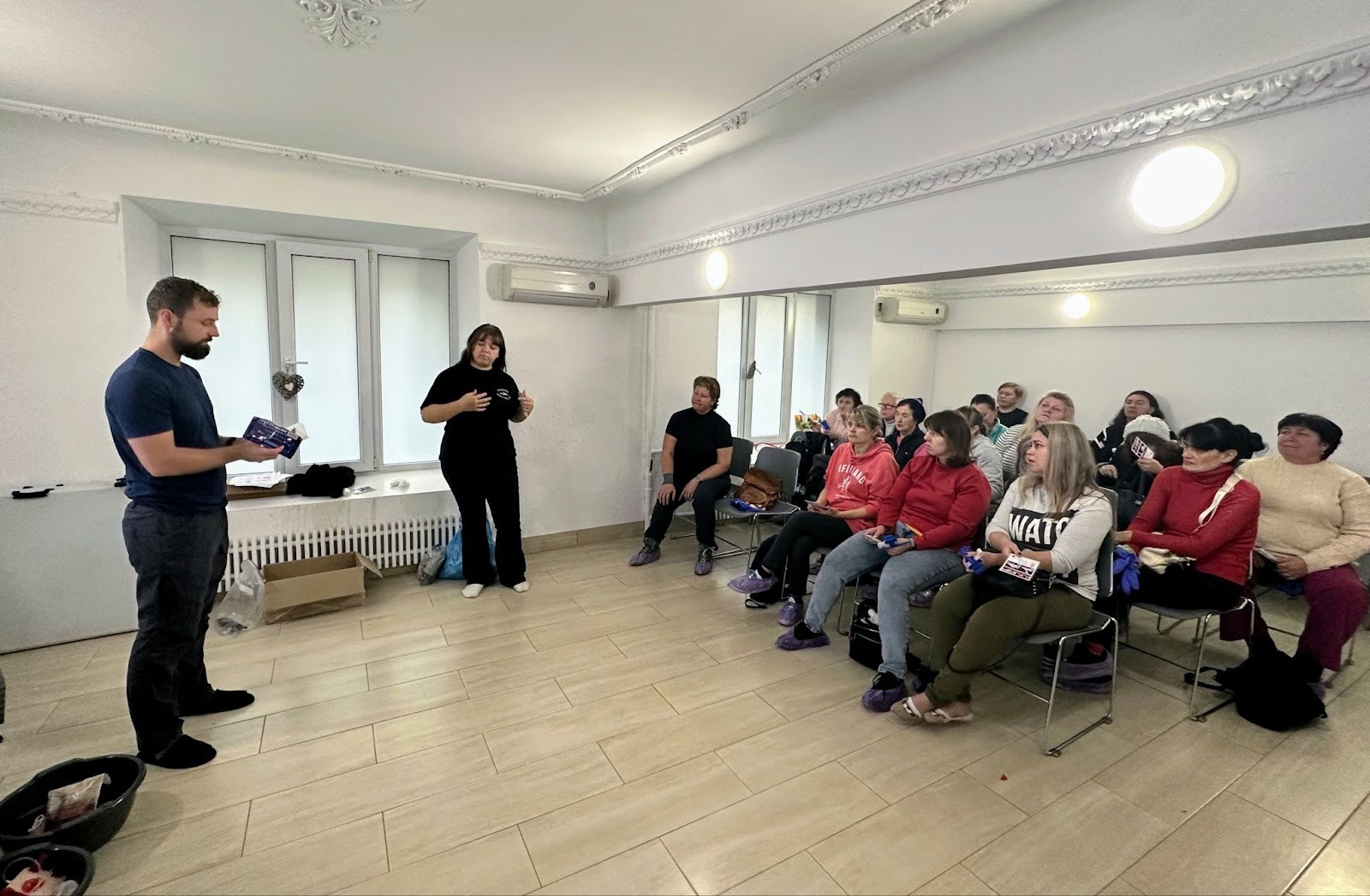

The last night we were in this city, Kyiv got hit hard. We heard drones overhead flying toward that city. As we returned, I snapped a photo of a damaged apartment building. Later, I learned that this building was hit by a Shahed drone the night before, injuring more than 12 people in their sleep.
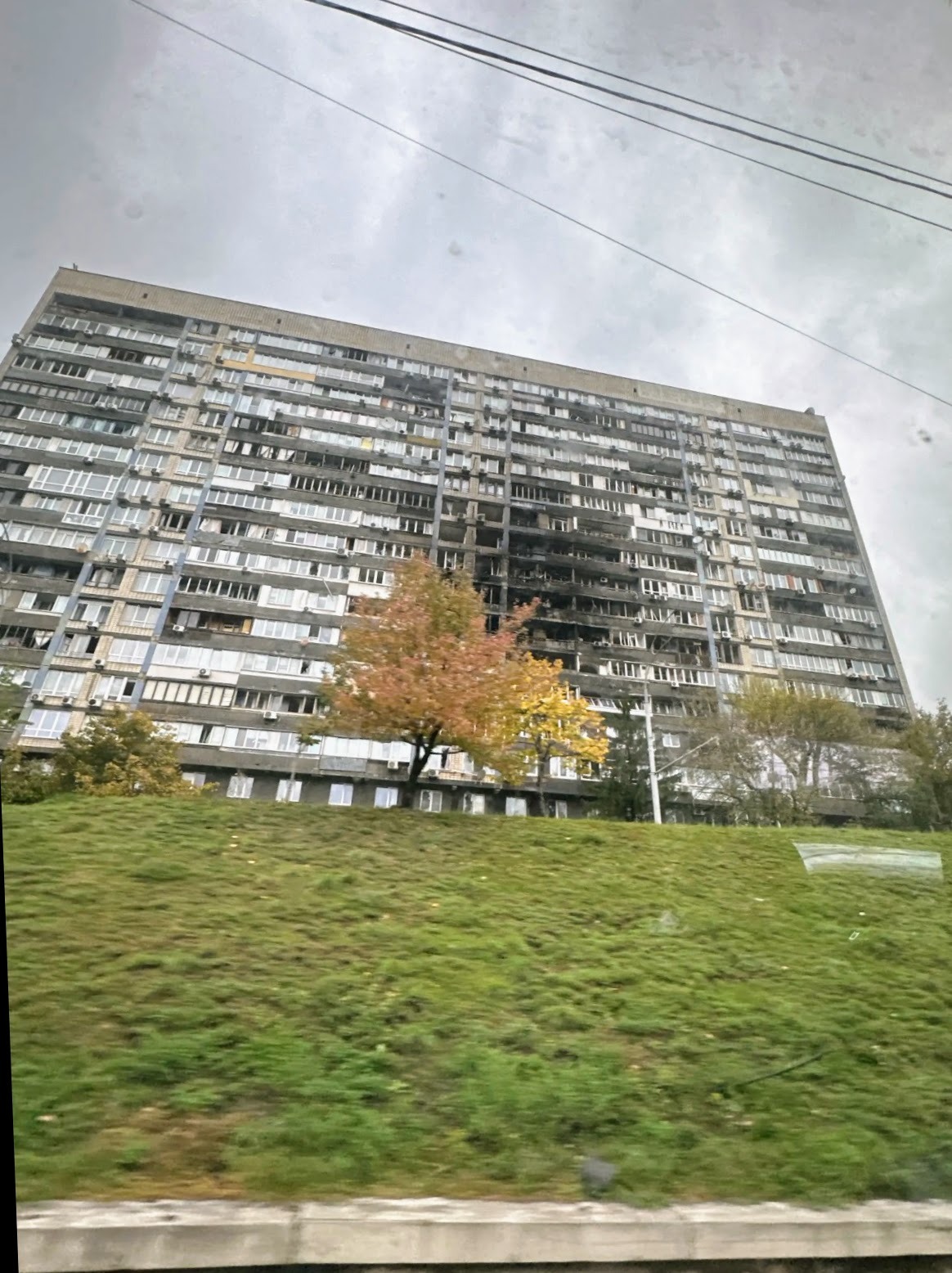
While we were in Kharkiv, the rest of the team was in another city much closer to the front-line. There, they taught first aid to civilians, and also spent time with local pastors and front-line medics. These medics spend 24/7 responding to calls that, here in the US, would be a first responder’s worst nightmare. Our team’s presence seemed to be very encouraging to them, because it showed them that they are not alone. At night, terror reigned the sky, as Shahed drones carrying 50 lb warheads flew overhead, searching for a target while anti-aircraft bullets blazed through the air.
The team in this city was able to train 30 people in life-saving skills. Every student received a fully built-out IFAK (individual first aid kit). One highlight of the team’s time in this city was when our team took action after hearing the medics explain how they’d had two ambulances destroyed by FPV drones in strikes targeted toward first responders. And their current ambulance was mostly destroyed by a fire. They explained a need for a patient monitor, costing $1,000. We relayed that need to you, our supporters. And within five minutes, the amount was covered in full. Our team spent time thanking God constantly for being able to provide this life-saving equipment.

Back near the capital, my part of the team was able to participate in a Day of Thanksgiving which Fight For Freedom Ukraine helped facilitate in Moschun, a small village which had been under occupation for months within the last couple of years. We also held a small first aid booth there, showing folks how to apply tourniquets and pack wounds. The day was festive; you could see in their eyes how grateful they were for their lives. The backdrop of this scene was often completely destroyed buildings, shrapnel-laden fences and doors.
.jpeg)
And then beauty. I saw it in the faces of babushkas who had lived through it all, and through volunteers who, while living in temporary housing due to their home being bombed, still showed up to serve on a day of thanksgiving. Another thing I would come to love about Ukraine was how they turned something as awful as bomb shrapnel into something beautiful. Often they would paint patterns on their fences or their buildings surrounding shrapnel holes. There were also many murals that had holes in them, from shrapnel or bullets.

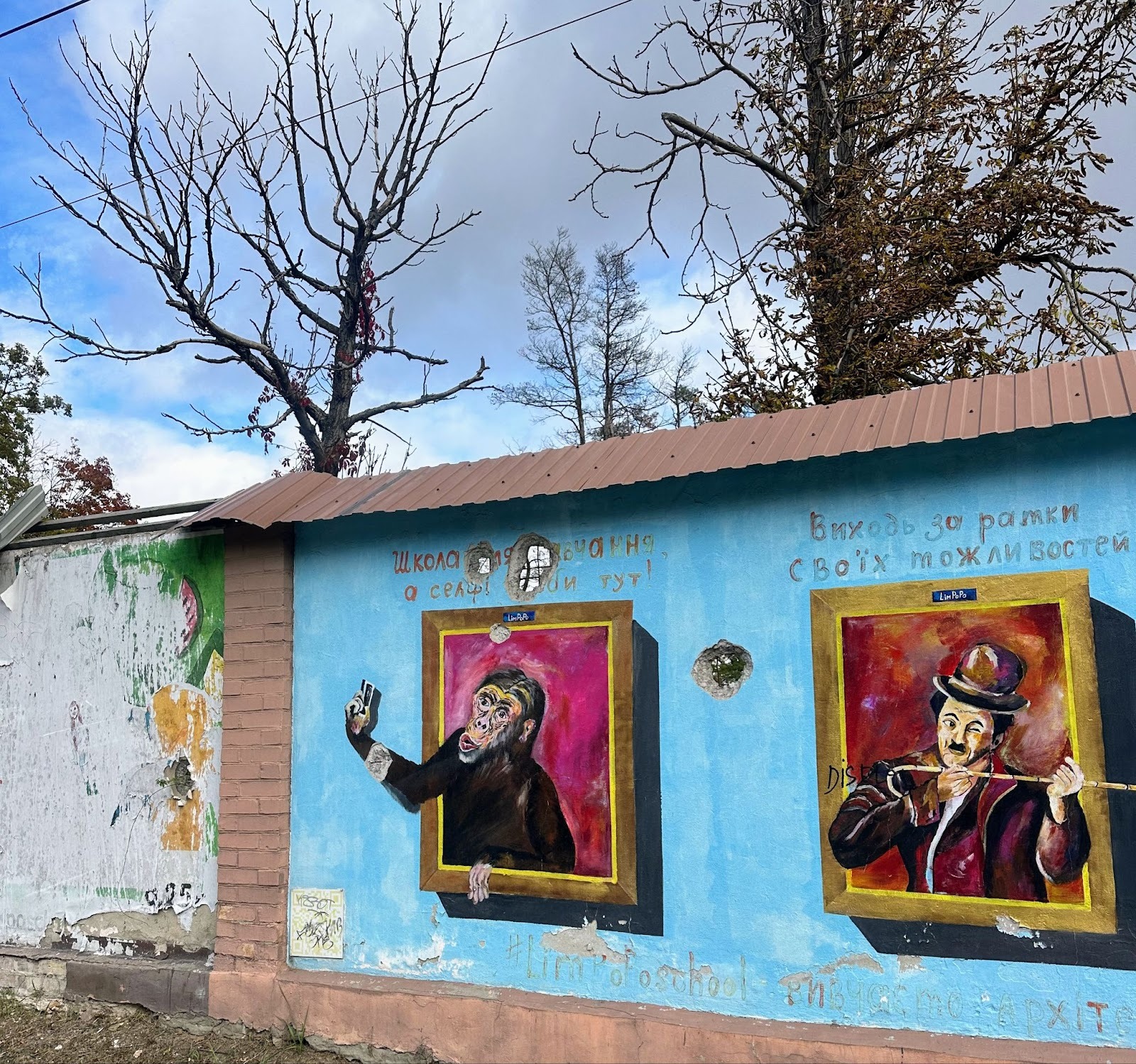
After this village day of thanksgiving, we headed back to the capital to meet up with the rest of our team. There, we restocked supplies, and commenced more Stop-The-Bleed trainings. Over the next few days, we were able to train over 253 people in life-saving skills. The students were high-school students, humanitarian aid workers, the elderly, and more. Before almost every training, we were escorted to the bomb shelter, where we were told to gather if an air raid sounded. Some classes were held in the bomb shelter so we wouldn’t need to be interrupted.
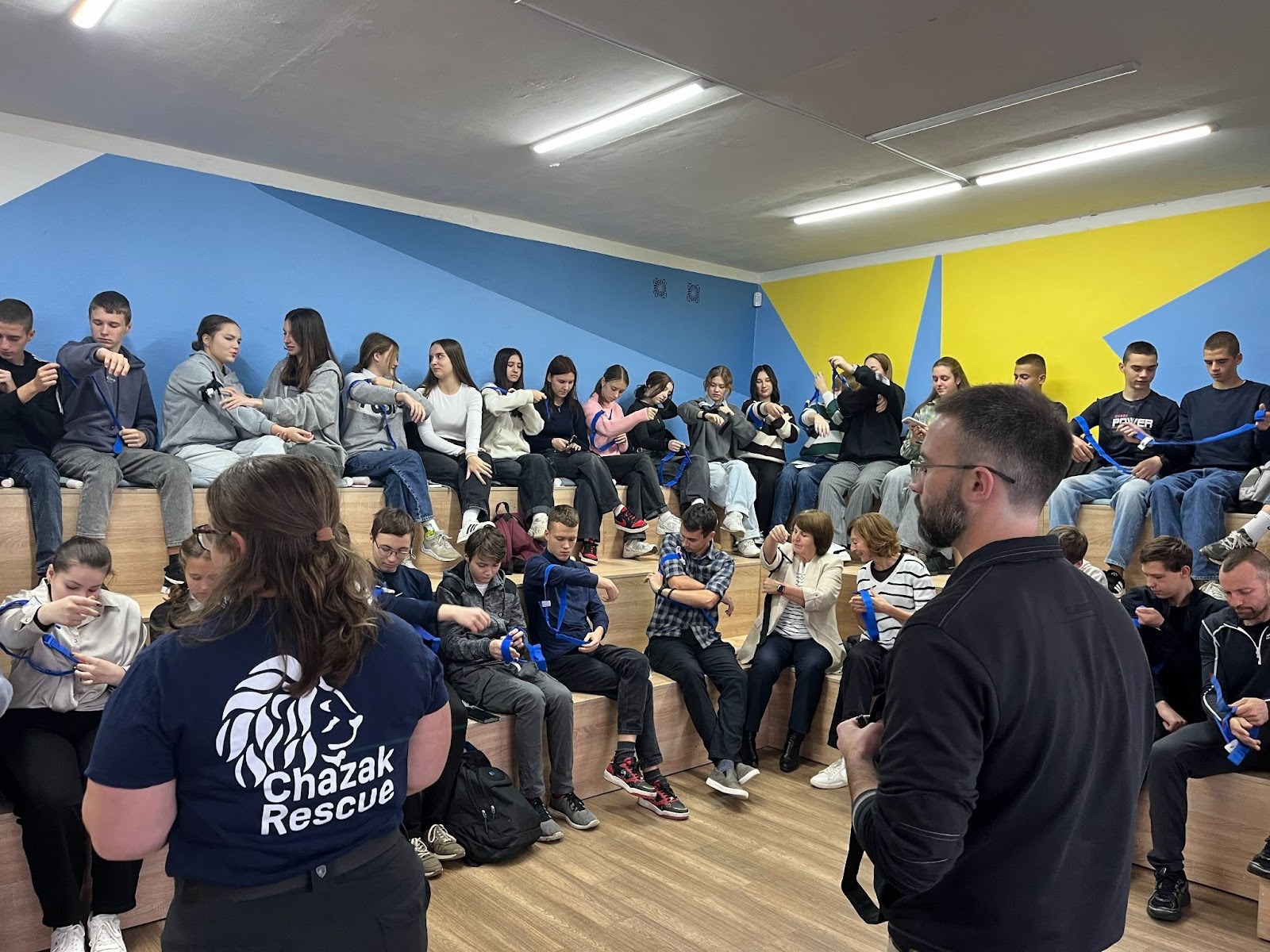
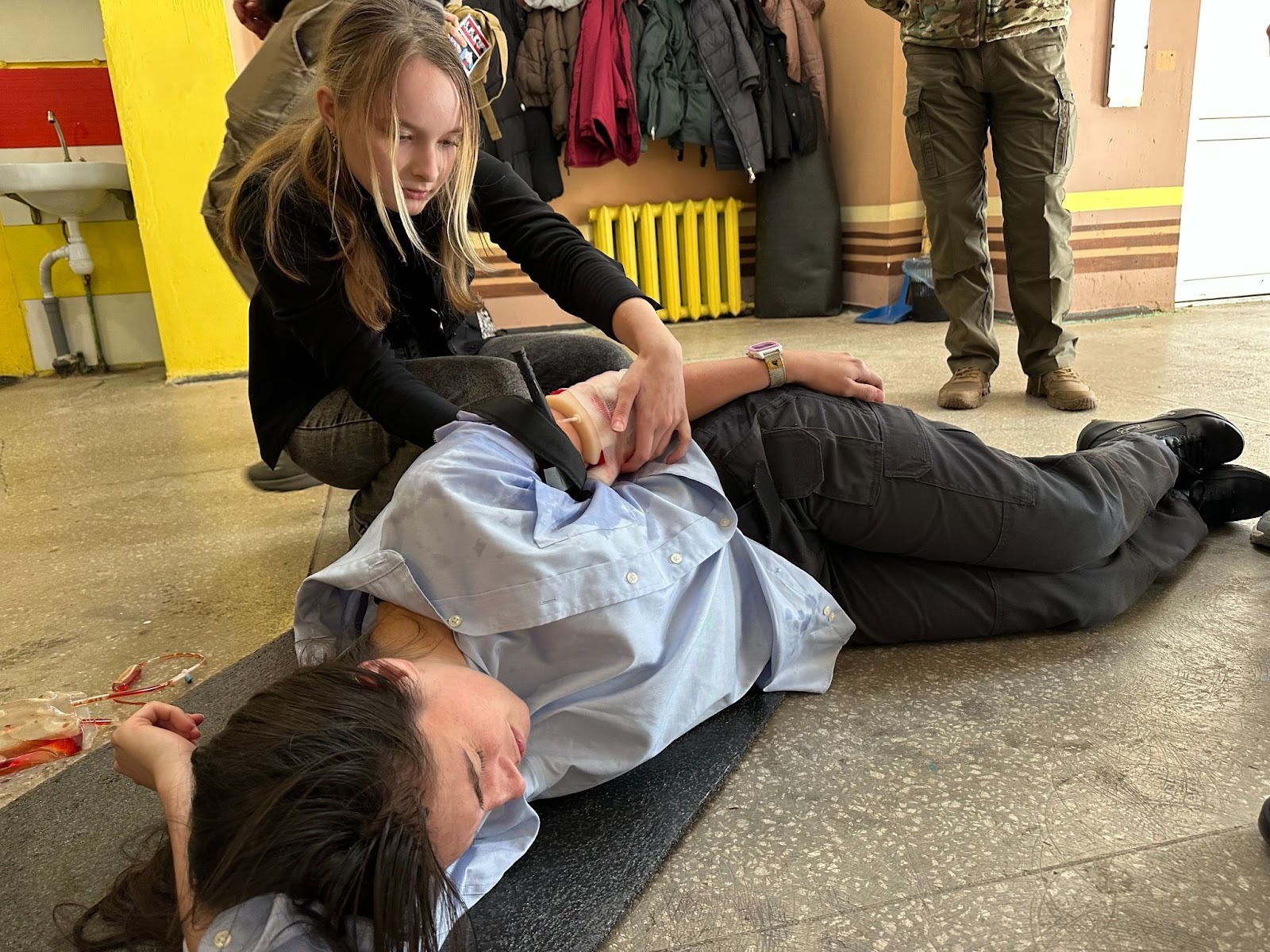
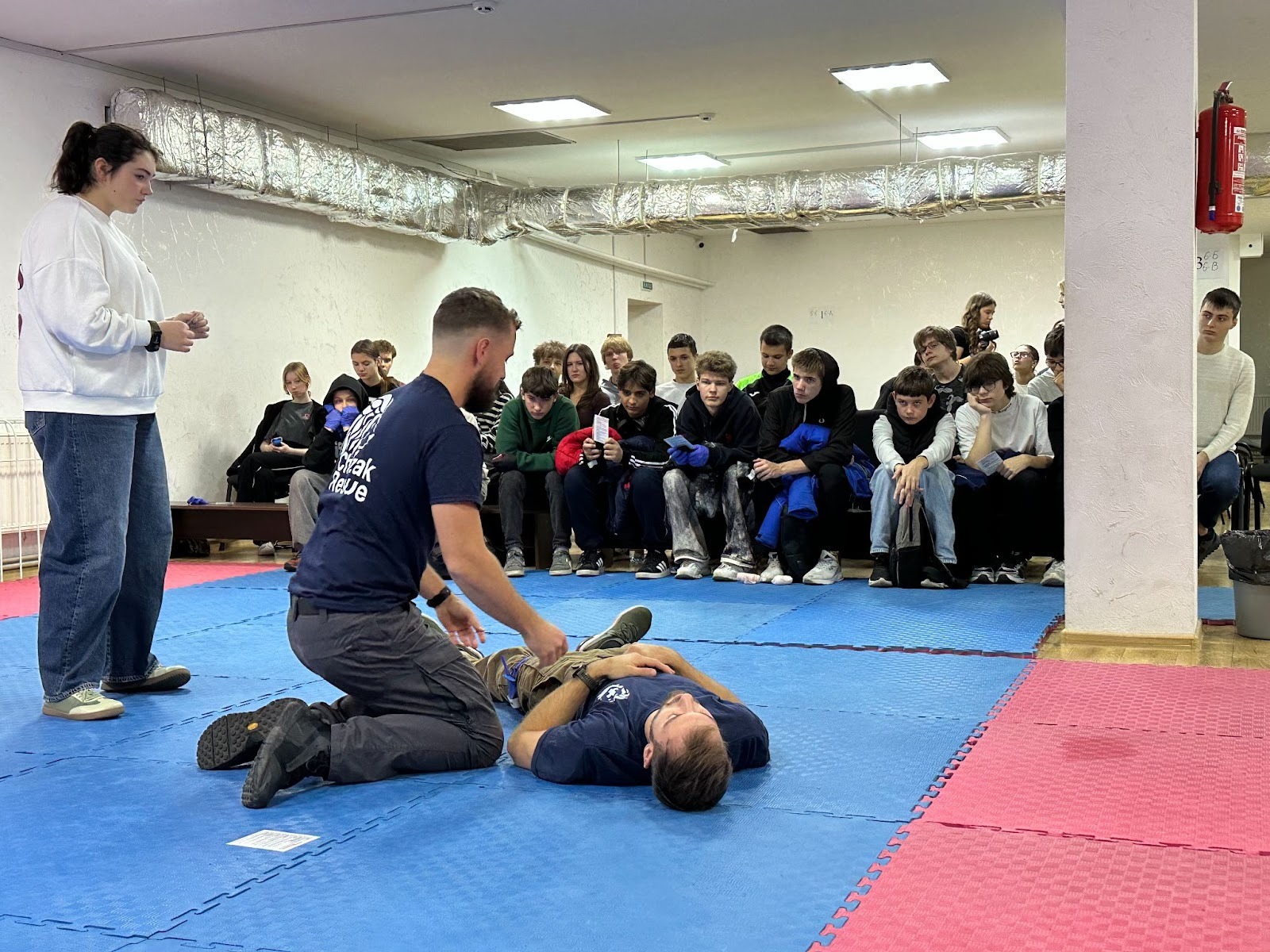
As a photographer attaché, I spent much of my time listening and watching. My goal was to capture the human side of this war, not only its destruction. I saw faces marked by exhaustion, but also by determination and hope. One thing I noticed was how grateful everyone was for the training. This is because almost every single person we trained had experienced the type of thing we were training them for. But until now, they hadn’t known what to do. Here’s what Fight For Freedom said about our training:
"In normal life, such knowledge is essential for firefighters, medics, and police officers — but unfortunately, in Ukraine, it has become a vital necessity for every civilian to know how to save a life — their own or someone else’s. During wartime, no one is safe from shelling or attacks. We are very grateful to Chazak Rescue for the opportunity to gain these important skills and resources!"
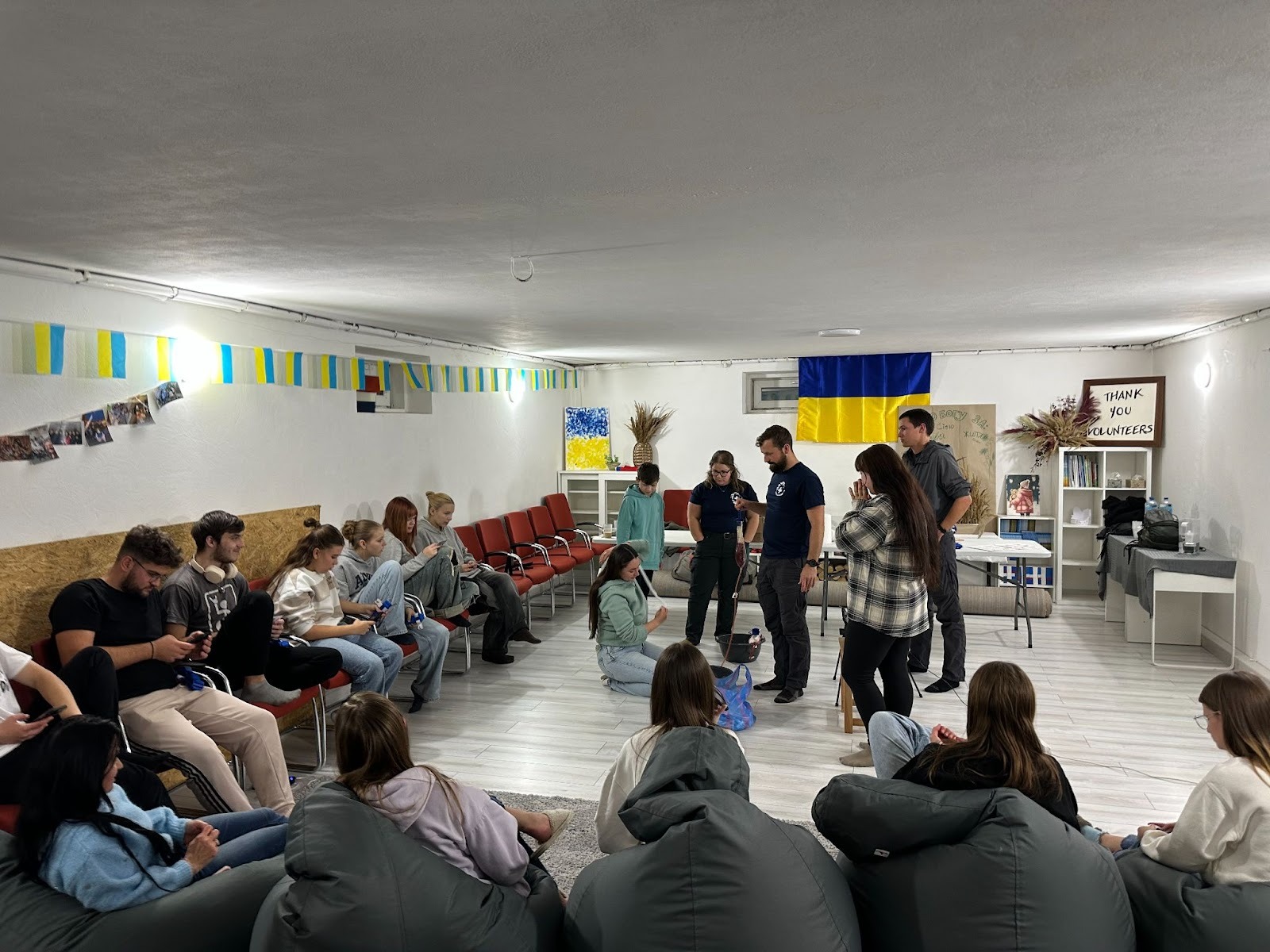
One woman, as she knelt to practice applying direct pressure, told us, “I’ve been in this situation before. Several months ago, I watched as a man was nicked by a piece of bomb shrapnel in his carotid artery. I held him in my arms as the ambulance took over ten minutes to respond, and didn’t know what to do as he bled out. I wish I had this training sooner.”
David, one of our medical attachés, wrote about one of the front-line cities they were in toward the beginning of the trip:
"The nets help to stop the drones, but sometimes they still find holes to fly through." The pastor of the small church pointed to the acres of fish net strung between telephone poles along the roadway. In the last few weeks, several dozen civilians had been killed by first person drones in this frontline city. These drones hunt people as they go about their daily lives.
"You know," he said, "not long ago there was a mother walking her baby at the park. One of their drones flew over, saw them, and dropped a grenade right into the stroller. The baby's remains were not recognizable, and the mother later died from her injuries. We have an 8 year old girl in our church who walks with a limp after a drone attacked her and her mother. Her mother was killed, and the girls hip was crippled. They thought she would never walk again, but now she does. She has a limp, but she doesn't give up... We need your first aid training here."
As we entered the church, the pastor shared that 80% of his congregation has physical scars on their body from drone and artillery attacks. As I began to teach, the class hung on everything I said, and they were very active and involved. At one point, while talking about head wounds, a woman asked a question, but before she could finish, she burst into deep sobbing. We paused to comfort her, and the pastor took her to another room. When he returned, he whispered to me "Her son died in her arms of a head wound like this, and she didn't know what to do."
At the end of the class, people begged us to stay for coffee and cookies with them, and one elderly gentleman came over to me and, with tears in his eyes, held my hand. "Thank you for not forgetting us. Thank you for teaching us these things. I wish I'd known sooner... Thank you for your prayers. Thank you. Thank you." He pulled me close and embraced me, kissed my cheek, and then looked me in the eyes. "Thank you for coming to us in our suffering. Please, do not forget us. Do not forget."
That is what this trip was about. Not the danger, not the adventure, but presence. Being there, and letting people know they are not forgotten.
Kristi, another one of our medical attachés, reflected on another city we visited in Ukraine:
“Last night we had our first of three TECC classes and I noted the broad variety of participants — teenagers and babushkas working diligently to learn how to apply tourniquets on each other. When it came time to practice wound packing, one little babushka got right down on the floor in her skirt and packed that wound with the vigor that only knowing life depends on it can give.
Kids hung around on the edges, watching their parents take the class. Kids who knew all too well the sounds of Shahid drones, anti-aircraft gunfire, and bomb explosions—who have possibly themselves already seen someone bleed to death.
‘The nursing child shall play over the hole of the cobra, the weaned child shall put his hand on the adders den. They shall not hurt or destroy in all my holy mountain; for the earth shall be full of the knowledge of the Lord’ (Isa 11:8).
I get the image of a carefree Eastern Ukrainian child running through a field of tall grass with no fear of drones above or IEDs and land mines below.
Since being here, I think I’ve heard every Ukrainian verbalize their determination to not give up alongside their deep desire to see the war come to an end. To that end I pray and dream with them, and along this vein I also dream of heaven, where greed and empire will no longer strive to drive another out with hate and evil. Where death will no longer have any hold, justice will reign with peace, Jesus will sit on the throne with the Father, and knowledge of Him is what everyone will seek and worship.”
Her words capture what many of us felt deeply. The church in Ukraine continues to serve in the middle of danger with no headlines and no recognition.
Adrian, our Team Leader, shared a similar reflection:
“Going on a trip to a place like Ukraine, many people think of the artillery strikes, drones and incoming missiles. And there is truth to this, yes we had our share of close calls and God's hand working to cover us.
Some people may ask if the war in Ukraine is still ongoing. Some may think it’s a playground filled with adventure, a storybook full of excitement. But what about the people? Those caught in the crossfire. The church is what excites me here. In the midst of ongoing war and chaos, it still thrives. Deep mature believers willing to go the extra mile to be examples of Christ in the crossfire. Our friend Svitlana and her husband take food and hygiene kits to places where drones are flying and constantly hiding and avoid them. They are not what you think of as aid workers, just everyday church goers looking to spread the hope of Christ and share the Good News.
Another example is a family of 5 children, could leave if they wanted to, some may encourage them to leave with such a young family. And yet they stay because the harvest is ripe in their village. Knowing that there are people who need spiritual guidance and care. All the while artillery and drones fly overhead. Even the barrel of a tank gun crashing through the wall of the church during a Sunday morning service. And yet they are grounded with such faith.
With such examples as these, the church has been a haven of hope for so many. So much has been lost that people don’t know where to go. Seeing examples such as these has drawn so many into the doors of churches. People are reaching for hope anywhere they can find it and what better place than the church. Having such examples as Svitlana and her husband and this young family makes me excited for all that God is doing.”
Those are the stories I want people to see when they ask what this trip was like. Not statistics or battle reports, but lives marked by courage and faith. When I look back through the photos, knowing the context they’re living, I see it everywhere. In the eyes of a student applying a tourniquet for the first time. In the hands of a mayor gripping his coffee cup in front of a shrapnel-laden backdrop, in children laughing outside the very same school that not long ago they were hiding in for months. In the eyes of the girl who told us that her grandpa was executed in the streets, and in the girl who told me that she’d lost all memory of what life was like before war.
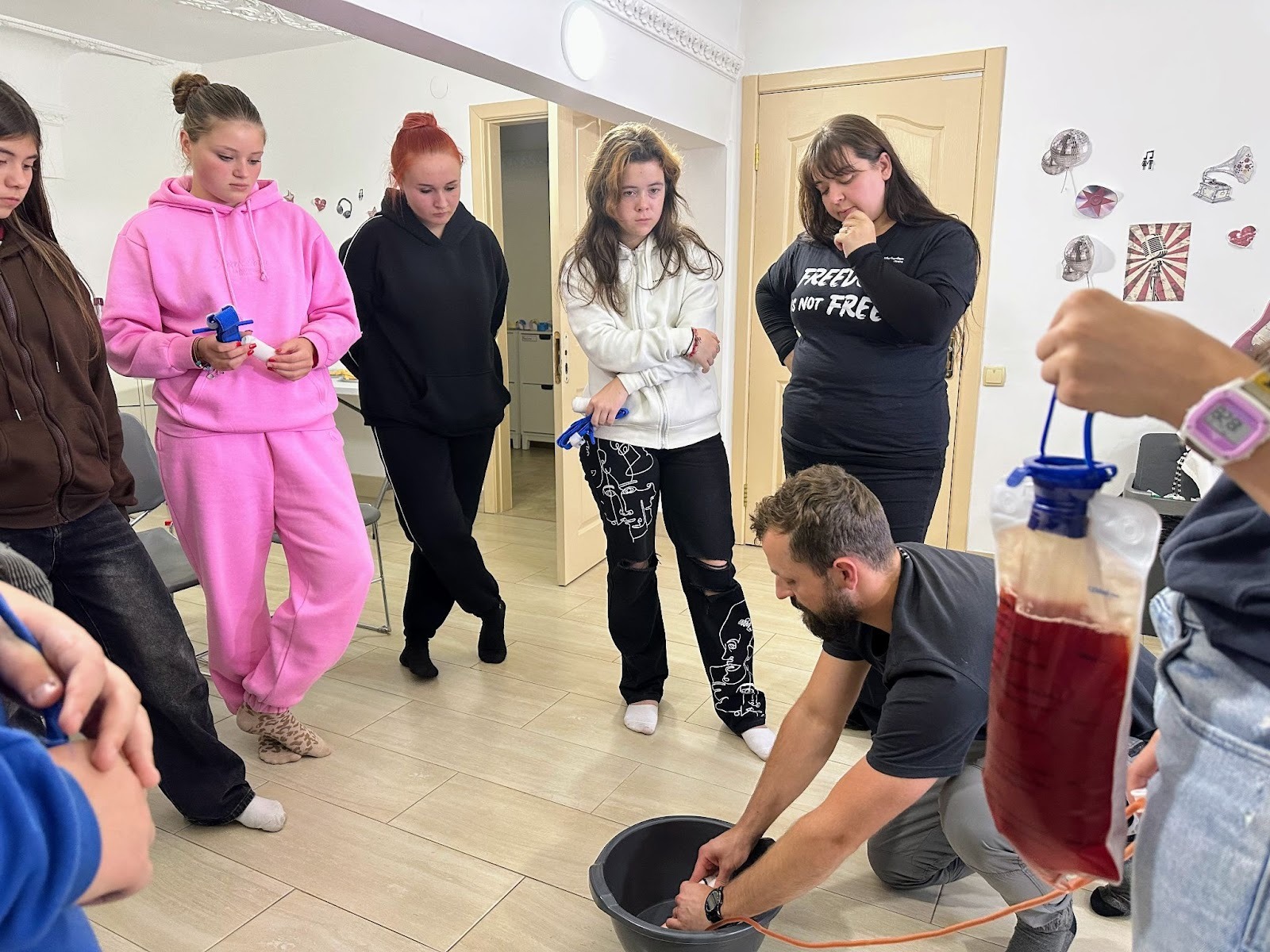
After we finished our first aid classes, part of the team and I headed home. Another part of the team went back into a front-line to visit some friends they had, encouraging them and their local church. The night before they arrived, they learned that a Shahed drone had struck right next to the church, shattering glass and destroying parts of the building. They assisted in recovering/rebuilding from the damage. Meanwhile, heavy rockets landed in homes surrounding where they were staying at several points. We are very grateful that they were blessed with safety!
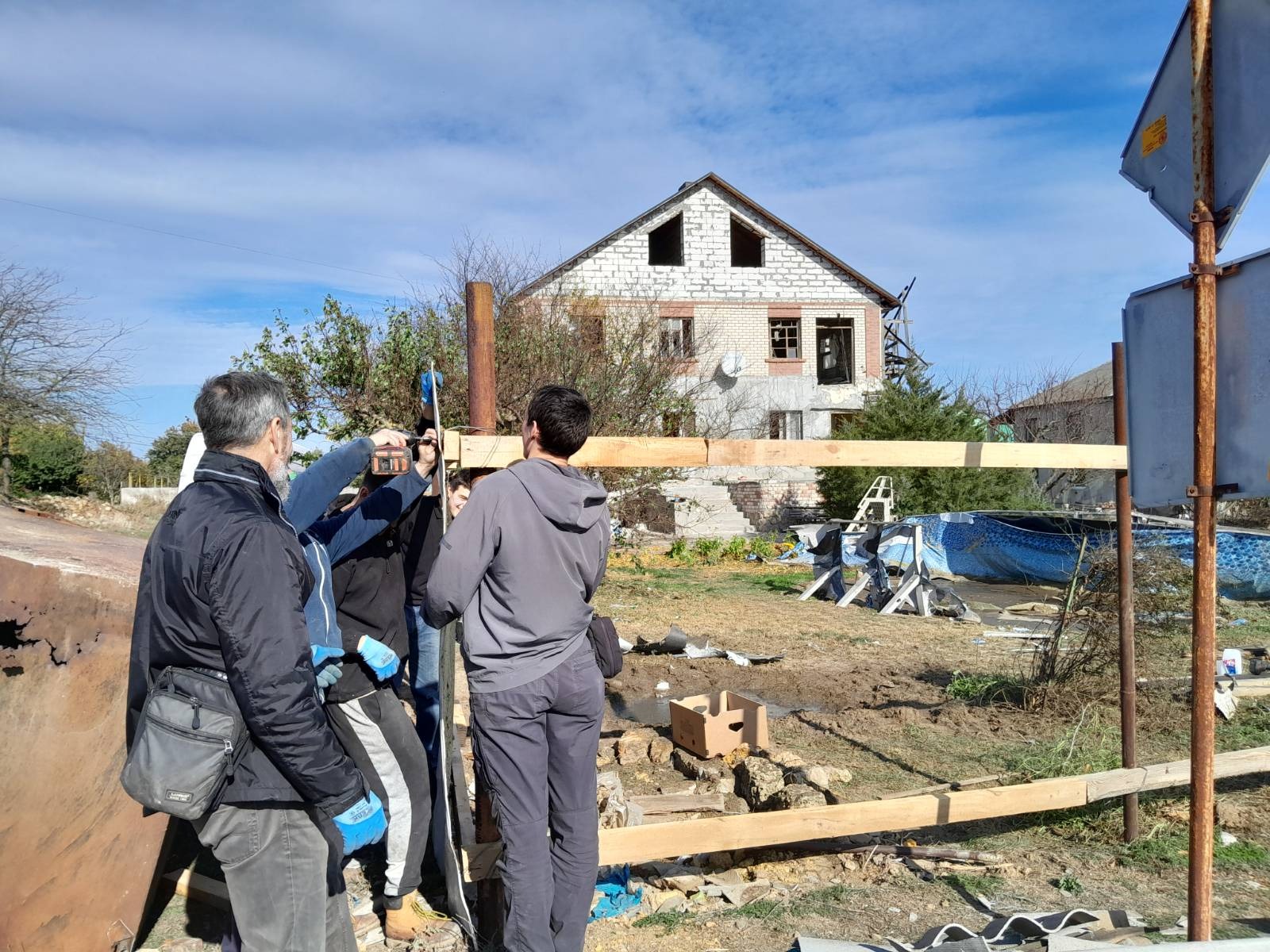

In total, we were blessed to be able to train 480 people in Tactical First Aid, and give over 100 IFAKs, in addition to over 150 tourniquets and other first aid supplies. To everyone who prayed, gave, or helped us reach Ukraine, thank you. This deployment was marked by hours of prayer, thanking God for giving us supporters who care. You helped us stand beside people who needed to be reminded that they are not forgotten.
Here’s what Bryanna (an Attaché and wife of a Guardian) had to say in review of this trip,
“As I stood in a chilly room and started teaching to all the eager people, I was shocked. You would be too by how few people in our class rose their hand to my question. “Who here has had some First Aid training before?” It was then that I realized the weight of what we were about to share with people. These are people that literally have lost neighbors, have scars on their bodies, and hear actual blasts in their cities daily. We heard quite a few stories and blasts to verify that ourselves. I just thought, “What a need there is for education!” And not just a class that relays information but an interactive one with surprise tourniquet drills, wound packing practice & “bleeding” actors for scenarios. God abundantly answered these prayers. While we anticipated about 100 students throughout our travels across Ukraine we got to teach 480! That’s 480 precious people who have skills to save a life and hope to combat the helplessness & fear so many battle daily. Our faithful God truly deserves all the credit. Our cup runneth over.”
The war in Ukraine is still grinding, even while we’re gone. We bring a lot of attention to it while we’re on-the-ground, but we never forget Ukraine. Just a few days ago, a kindergarten was hit in a targeted strike in Kharkiv, killing several people. A kindergarten just like the one I helped deliver aid to. Things like that happen every day in Ukraine. Let us never forget our neighbors, just because they’re across the world. For some reason, God chose to let us live in a peaceful land for now. Let’s use this blessing wisely, for the good.
We plan to go back to Ukraine within months. If you would like to partner with us, we are still lacking funding for the last leg of this deployment to cover our team’s expenses. We’re around $5,000 from fulfilling that goal, and any additional funding will go toward the next trip there.
Scroll to the bottom of this page for a gallery of photos from our time in Ukraine!
Finishing the Mission,
Peter K.
Partner with us toward this deployment by using the secure giving form below.
